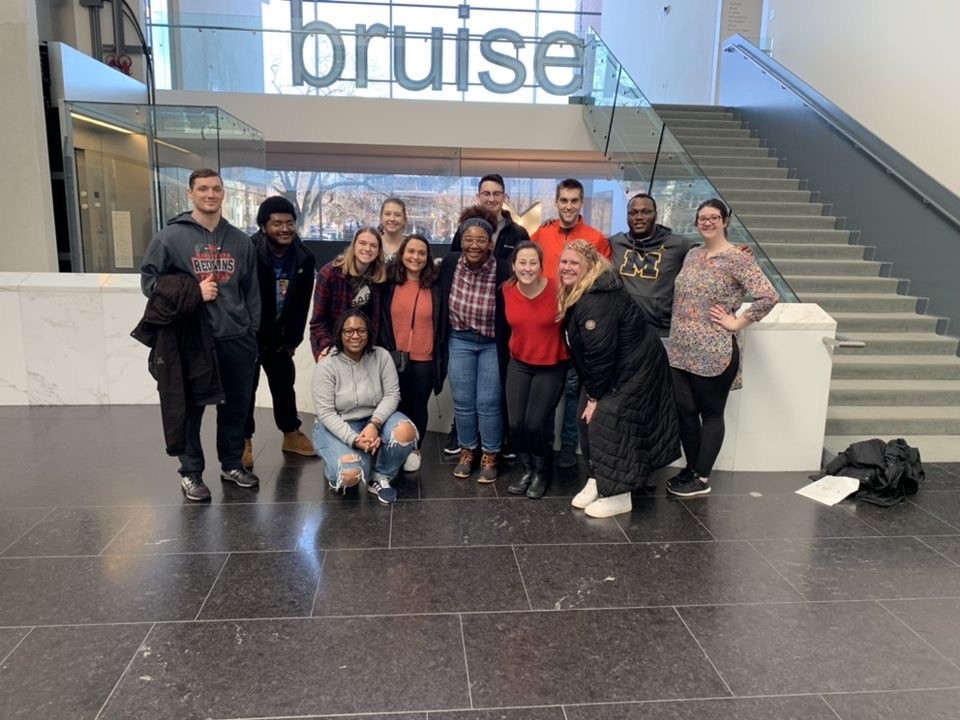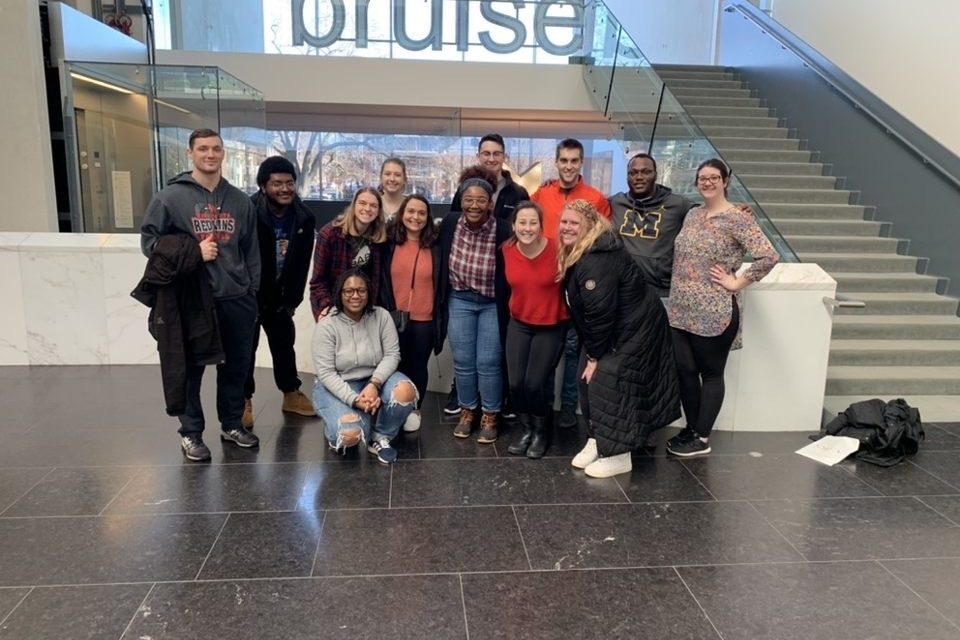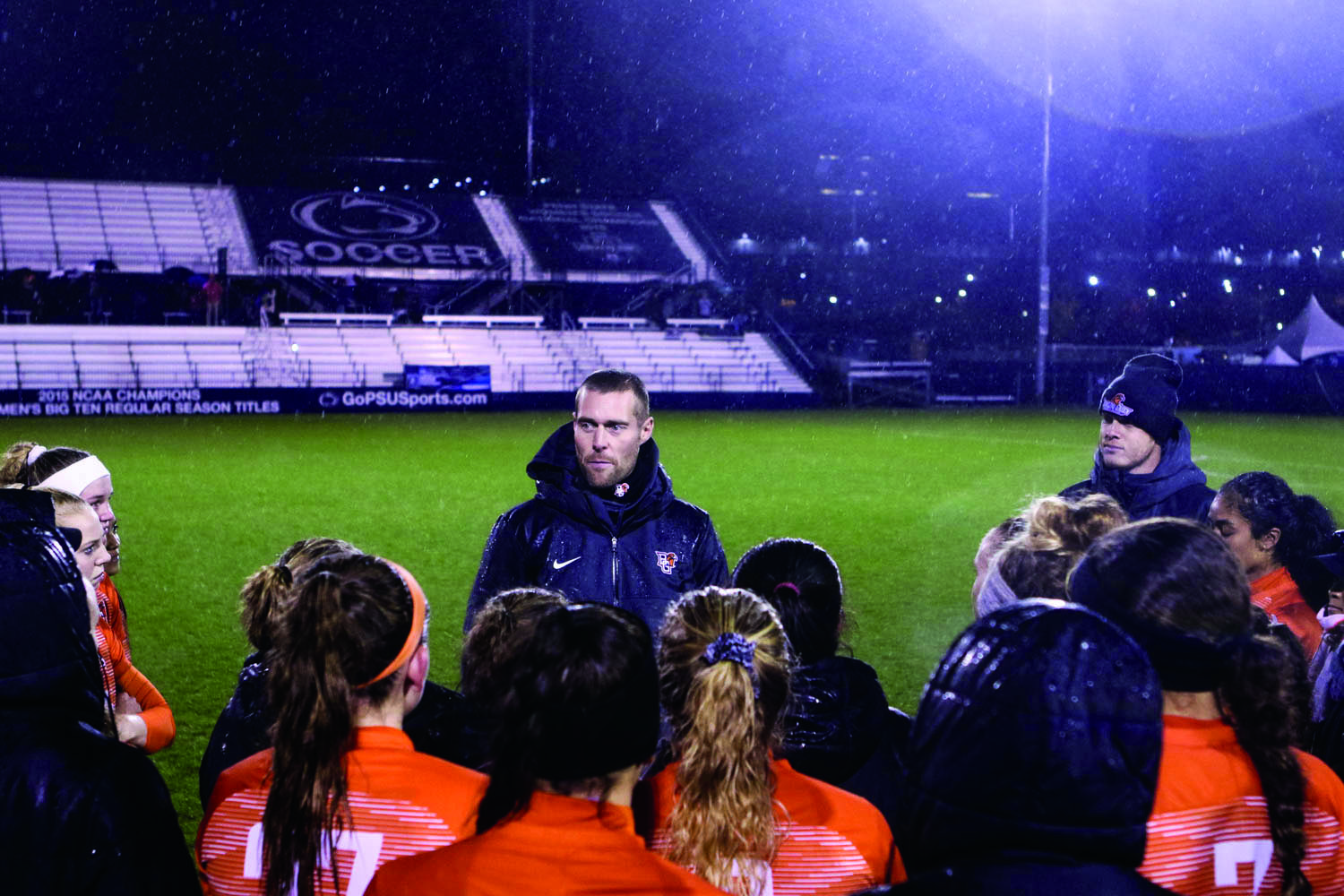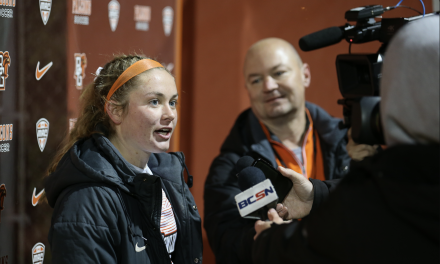Refugees in America
With fewer and fewer refugees allowed in the United States each year, there may come a time when no refugees are accepted.
Mary Ross | Editor in Chief
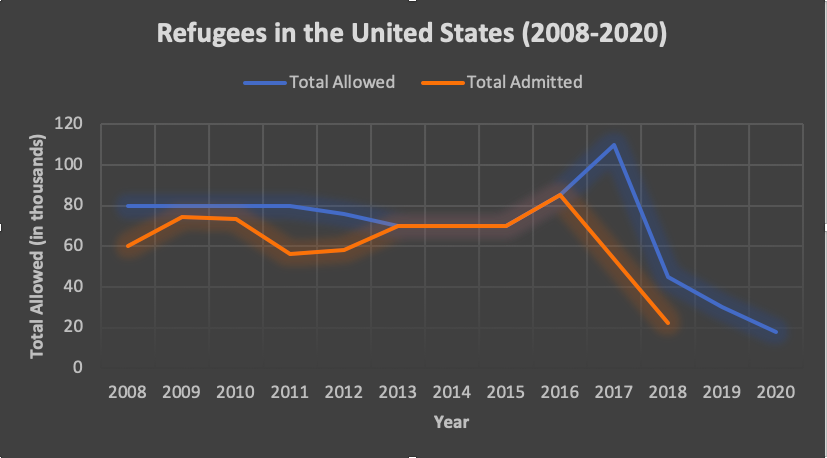
“I feel that people do not always accept refugees in America because of fear. People are naturally afraid of the unknown, and it is no different when considering the acceptance of others.”
Refugee admission and resettlement in the United States has been on the decline since the start of the Trump administration.
This correlates with President Trump’s 2016 campaign promise to limit legal immigration to the United States.
Under the Refugee Act, the president works with Congress to determine the overall refugee admissions ceiling, among other things at the beginning of each fiscal year. In the last year of the Obama administration, the “ceiling” was 110,000. This year, the “ceiling” is set at 18,000.
Changes to immigration under the Trump administration other than the decreasing number of allowed refugees include the cancellation of Deferred Action fr Childhood Arrivals (DACA), banned nationals from various countries throughout the world from entering the United States and has increased funding for U.S. Border Patrol Budgets, especially along the United States and Mexico border.
These changes in immigration policy and funding could prove disastrous for resettlement agencies, their staff and refugees already legally allowed in the country.
For some BGSU students who have volunteered with resettlement agencies, these changes and the effects of these changes are devastating.
Freshman Human Development and Family Studies major, Meah Dixon, thinks refugees should be given a chance.
“I wish people understood that refugees are just normal people like you and me. All they want is to raise their family in a safe environment and fit in with the rest of us. It’s almost like being the new kid in school, but on a much bigger scale. … It’s definitely intimidating for them when they first arrive in America, and they don’t always have all of the resources that they need, which is why the work that organizations like the IRC (International Refugee Committee) does is so important,” she wrote in an email.
According to the Department of Homeland Security, “A refugee is an alien outside the United States who is unable or unwilling to return to his or her country of origin because of persecution or a well-founded fear of persecution on account of race, religion, nationality, membership in a particular social group, or political opinion.”
From 2016 to 2018, the locations where the United States accepted the most refugees were from the Democratic Republic of Congo, Burma and Ukraine due to ongoing violence in those countries.
However, due to the knowledge of the Syrian Civil War and subsequent Refugee Crisis, it is common for people to think the only refugees in the United States come from Syria and other countries in the Middle East.
As a result, this can lead to misunderstandings and myths about refugees.
Sophomore Human Development and Family Studies major, Patrick Caniglia, feels people don’t understand refugees, resulting in their disapproval of them.
“I feel that people do not always accept refugees in America because of fear. People are naturally afraid of the unknown, and it is no different when considering the acceptance of others. Will they take my job? Will they speak my language? Will they bring crime from their homeland?” he wrote in an email.
Master of Public Administration graduate student, Elaina Eskins, believes much of this occurs because there are so many myths surrounding immigration.
“Especially learning the specific details of the refugee crisis, it’s just disheartening because it’s misconstrued in so many ways, especially in the media outlets and the way we view refugees and asylees, even just immigrants,” she said.
Eskins is referring to the common misconceptions that immigrants are taking away jobs, using up government funding and are a safety threat to American citizens.
Sophomore Philosophy, Politics, Economics and Law major, Kylie Stanley, thinks people against refugees don’t understand why they are refugees.
“People assume refugees are coming to America to steal our resources, but the truth is if they are a refugee in America that means that their life was in direct harm, whether it be from terrorist organizations, environmental disasters, gang wars, proxy wars or any other horrible situation,” she wrote in an email.
Part of these people’s assumptions can be a result of publicizing violent crimes committed by some people not from this country.
Some examples come from President Trump’s State of the Union Address, wherein he relayed several instances of violence committed by undocumented immigrants. One such example President Trump gave was, “In sanctuary cities, local officials order police to release dangerous criminal aliens to prey upon the public, instead of handing them over to ICE to be safely removed. Just 29 days ago, a criminal alien freed by the sanctuary city of New York was charged with the brutal rape and murder of a 92-year-old woman. The killer had been previously arrested for assault, but under New York’s sanctuary policies, he was set free. If the city had honored ICE’s detainer request, his victim would still be alive today.”
Dixon believes that peoples’ views of refugees based on mass publicization of violent offenses, and consequent ill feelings, result in worse treatment of refugees.
“I believe that the majority of the population often views them as a security threat and a financial burden. However, in a paper that I also wrote recently about refugees, I found research that claims that none of the hijackers in the 9/11 attacks were refugees and the odds of an American being murdered in a terrorist attack by a refugee is close to 1 in 4 billion per year, which is obviously almost a nonexistent percentage,” she wrote.
But despite these depictions, refugees are still people and have similar desires to the normal American citizen.
Caniglia had the chance to work with a Congolese refugee family during a Bowling Green Alternative Break trip to Richmond, Virginia in January 2019, as well as go on the trip again in January 2020.
“I was part of a group that led an English Learning Training session with a Congolese family of eight located in a low-income community just outside of Richmond. As we worked in the home throughout the week, one of the family’s children and I worked together almost exclusively. He was 12 years old and knew almost no English, but he still managed to ask me two questions each time we walked through the door: “When are you all coming back?” and “When does school start?” Because of immunizations, the child had not yet begun school. After being in the country for about a month, he just wanted the opportunity to learn,” he wrote.
Eskins also went on the bGAB trip to Richmond in January 2020 and found the refugees she had the opportunity to work with cared much for their visitors and always made sure they were comfortable in their home, showing they wanted to be kind and friendly to the people they shared their space with.
“They wanted us to make sure we got our tea and we got our snacks and we were comfortable even though they were put in this situation, that they cared that we were fine. I think that really impacted me too,” she said.
Despite her positive experiences interacting with refugees, Eskins is conflicted on whether or not to believe other people would value their experiences and have their perspective of refugees changed.
“I would say that once they learn a name and a face and a background story, their perceptions would change. But some people feel safety in their current perceptions, and I don’t know what it would take to change some people’s minds about it,” she said.
With an 18,000 refugee limit this year and a temporary halt to accepting refugees due to the COVID-19 pandemic, there will be less refugees in the next few years to impact people to accept refugees the way Eskins, Caniglia, Dixon and Stanley all wish they would.
Moreover, Politico reported that the Trump administration debated whether or not to make the refugee limit zero this past year. This may be an indication that if Trump is reelected, the United States will not be seeing refugees during a second term of the Trump administration, which would be devastating to refugees already here and resettlement agencies dedicated to helping refugees thrive once they arrive.
Despite this, Dixon hopes that this will mean more support for refugee families already in the country.
“It’s sad that we can’t currently accept any more refugees due to the coronavirus but I think it’s a great way for all the refugee resettlement agencies to put a really strong focus on the families they are currently working with,” she said.
Stanley hopes the news of what coronavirus is doing to the immigration system raises awareness of what she views as failures of the Trump administration with immigration.
“I hope that we see this as a way to fix our immigration system. The asylum and refugee process is traumatic and takes years and the journey can be tolling. Now, with the virus, their situations become much more deadly. I hope that through this virus, we can come out compassionate to one another.”
“I would say that once they learn a name and a face and a background story, their perceptions would change. But some people are so, they feel safety in their current perceptions, and I don’t know what it would take to change some people’s minds about it.”
